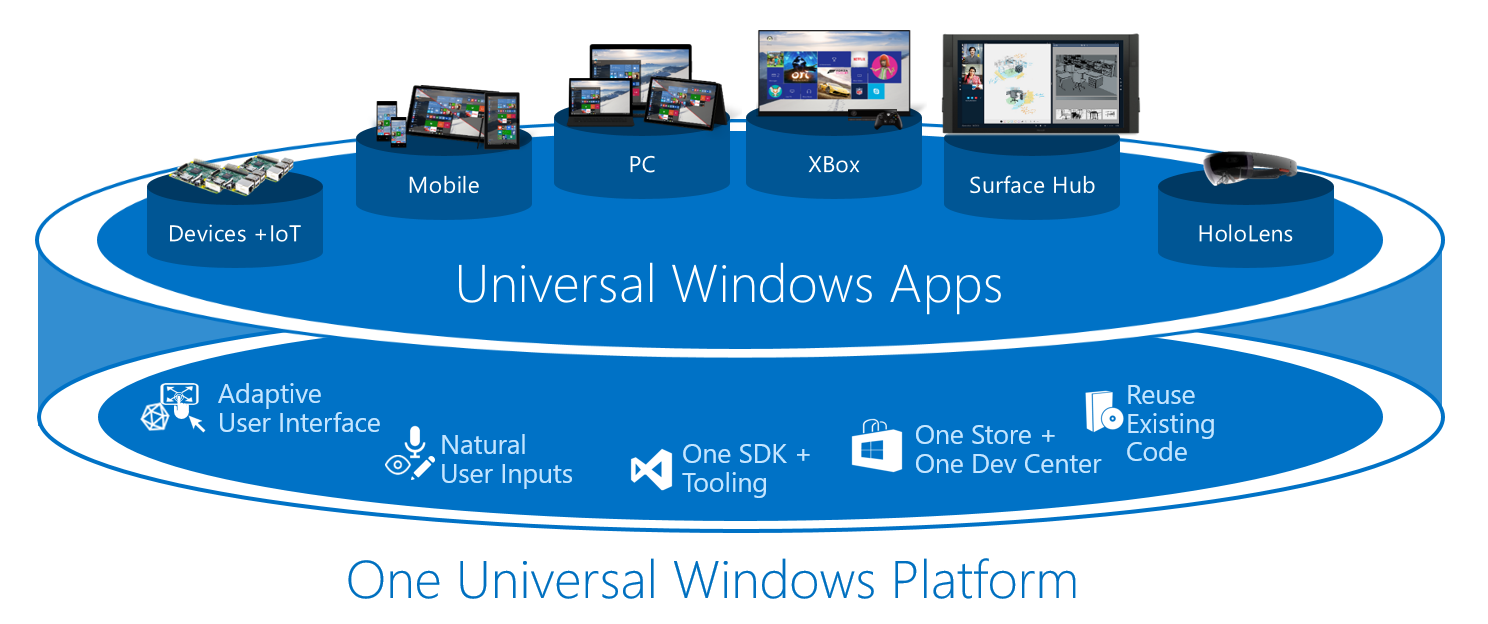Introduction
On July 29th, the final version of Windows 10 was released. That is a very interesting event for Microsoft mobile developers. In fact, Windows 10 has come with a new concept and new tools that developers should be aware of. In the following, we'll talk about the new platform that runs on multiple Windows devices and the new important user controls.
Windows 10 apps
Before Windows 10, developers find themselves obliged to write 2 different codes to target both Windows 8.x and Windows Phone 8.x devices despite the many techniques to share the business and UI code using Portable Class Library, Shared projects or even Xamarin.Forms.
Now it is seemlessly different and way much more better. Like iOS and Android platforms, Windows 10 platforms' code could run on smartphones, PCs and tablets. Even better than that, they can also run on XBOX, Raspberry PI 2 and Hololens: the widest range of devices ever targeted by Windows. This ecosystem is better known as Universal Windows Platform (UWP).

Visual Studio 2015
Visual Studio 2015 with Universal Application tools are required to develop apps for Windows 10. Students and opensource projects contributors can get a free version called Visual Studio Community. To enhance the performance of Windows 10 apps, VS comes with a set of prformance tools that track the CPU, memory and network usage. In addition to that, it adds a feature thet inspects and edits the visual tree at runtime, which saves time designing the apps.
Always installed by default with VS, Expression Blend have got more capabilities as editing XAML with IntelliSense enabled and source control editing.
New user controls
Universal Application Platform (UAP) comes with a set of new and improved user controls. The most interesting one is SplitView which helps navigate inside the application.

New controls are also RelativePanel and WrapGrid which helps design better apps using less XAML code, hence better performance.
Tablet/PC vs Smartphone's code
I mentioned earlier that the same UAP code could run on both tablets and smartphones. But, there is some differences between these two devices like camera, sensors, GPS... TThe way UAP handles this is by letting the developer check for the available API inside the device, like the following code:
var api = "Windows.Phone.UI.Input.HardwareButtons";
if (Windows.Foundation.Metadata.ApiInformation.IsTypePresent(api))
{
Windows.Phone.UI.Input.HardwareButtons.CameraPressed += CameraButtonPressed;
}
Download links
Windows 10 Enterprise.
Visual Studio 2015 Community.
Universal Applications Tools.
